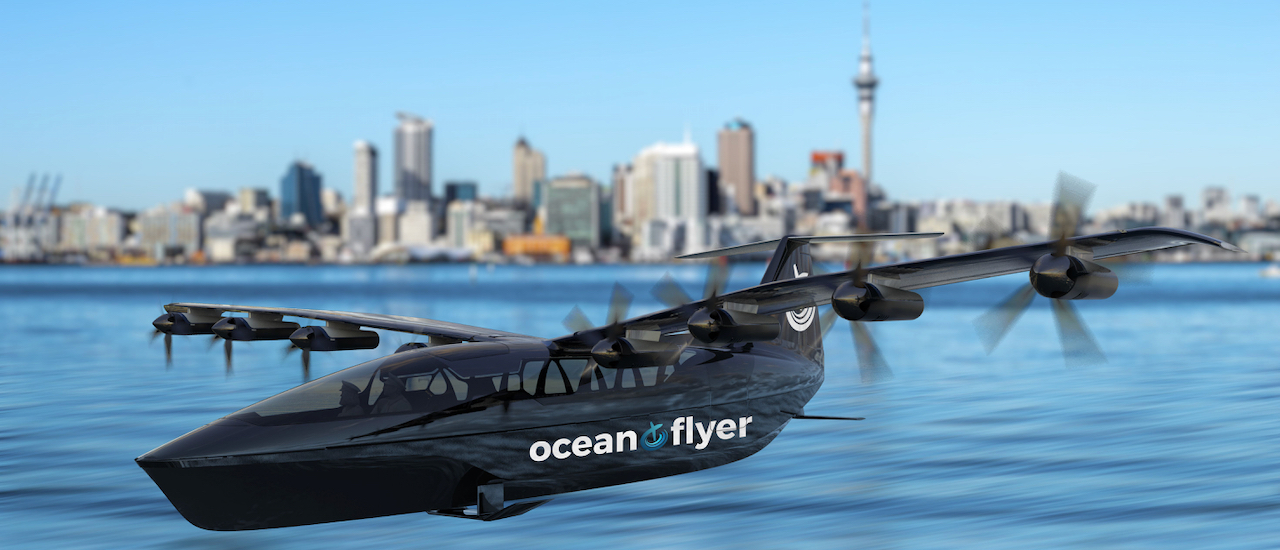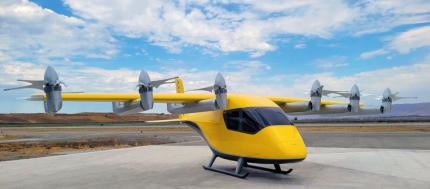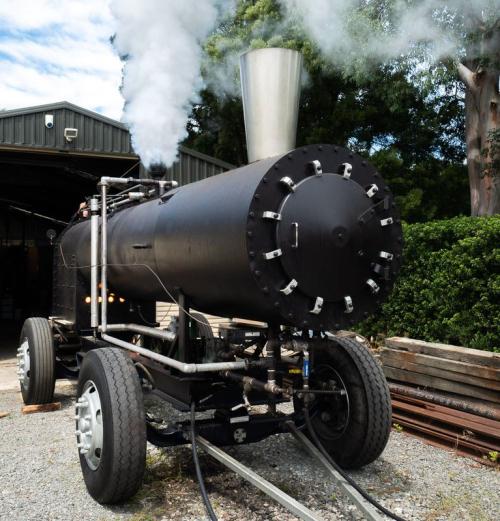
The future of transport
What’s on the horizon for innovative transport solutions in Aotearoa?
Companies in Aotearoa have joined a global movement to decarbonise and diversify how we get around.
Flying boats
Ocean Flyer is a travel venture that signed a $700 million deal last April to bring 25 sea gliders to New Zealand.
Taking elements from aeroplanes, boats and hydrofoils, the largest of these future craft will carry up to 100 passengers at 540km/h, ten metres above the sea. Set to compete against airlines in the inter-regional travel market, tickets are projected to be cheaper than air fares. Trips on the electric gliders could cost as little as $30 for travel between Whangārei and Auckland or $60 from Christchurch to Wellington.
Ocean Flyer, which is backed by former Air Napier CEO Shah Aslam and former Air Force chief John Hamilton, is confident in the viability of the craft following trials by United States-based start-up Regent. Online footage shows the propellor-driven craft rising onto its foils before lifting out of the water and flying low over the surface.
The first sea gliders expected to hit the New Zealand scene by 2025 are the 12-seater Viceroy, with larger models to follow in 2028.

Air Taxis
Billed as the 'world’s first self-flying electric vertical take-off and landing (eVTOL) aircraft’, a big chunk of the development of the four-seat Wisk Aero was done in Canterbury.
Flight testing was split between the Mackenzie Country and the company’s base in California, with a view to creating an air taxi that could transport people for as little at $3 per kilometre.
Wisk’s sixth-generation model cruises at around 222km/h and has a range of 144km, with reserves. It’ll fly at an altitude of 2,500 to 4,000 feet (762 to 1,219 metres).
Testing in New Zealand has been completed and the focus is now on getting the pilotless Aero ready to operate in busy aerospace zones.
Air New Zealand has lent its support to Wisk, joining an impressive list of partners including Boeing and NASA.
Electric buses
It’s been decades since car makers closed mass-assembly vehicle factories in New Zealand, so it may be a surprise to hear that local vehicle manufacturing still exists – and with a green twist.
Rolleston-based manufacturer Global Bus Ventures (GBV) builds buses from scratch. Along with building electric buses, the company is responsible for the country’s first zero-emission hydrogen bus which is now in service with Auckland Transport.
With the Government planning on decarbonising the public transport bus fleet by 2035, this could be GBV’s opportunity to expand and become a significant supplier for the New Zealand market.
High-speed railcars
Another Canterbury-based firm is developing high-speed, battery-powered railcars, which it says could eventually travel up to 300km/h and cover the distance from Christchurch to Auckland in seven hours.
Miro Rail is billing its railcars as clean, quiet and low cost; it aims to have a prototype up and running within two years.
Making use of the existing rail network, top speeds wouldn’t be achievable straight away, however the company says 110km/h is not out of the question, and the network could be upgraded over time to allow higher speeds.
Miro hopes to produce its railcars in Canterbury. It is now seeking seed funding.

Future steam
While not strictly working on transport solutions, AgLoco couldn’t go without a mention in this article. The Christchurch company is developing steam engines they say can compete with diesel-powered tractors and haulers used on farms.
Looking like the locomotives of a century ago, the engines developed by AgLoco founder Sam Mackwell can reportedly match the power-to-weight performance of equivalent conventional tractors. The engine can run on wood chips and takes less than 10 minutes to reach operating pressure.
Wood fuel is considered a carbon neutral sustainable energy source; the carbon released in the combustion process is, in theory, reabsorbed by living trees.
The technology has been developed to prevent sparks that could cause a fire in arid conditions, plus Sam’s designs also eliminate smoke and utilise a low-volume boiler that minimises the risk of explosions.
The romance of steam is not lost on AgLoco with Sam saying a whistle will be “a mandatory component” on the company’s engines.
Read more from this AA Directions issue while you're here:
Reported by Matthew Tso for our Autumn 2023 issue
